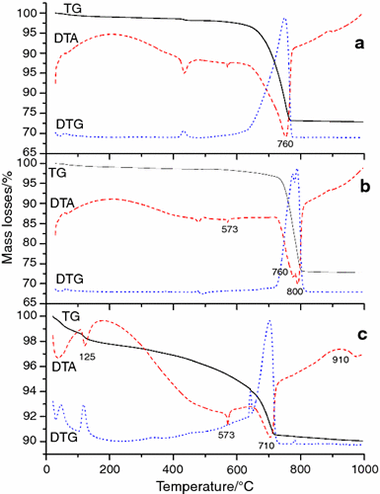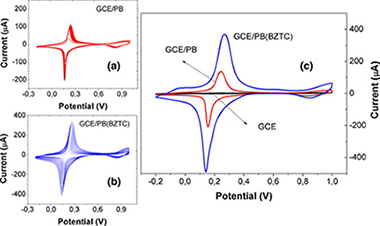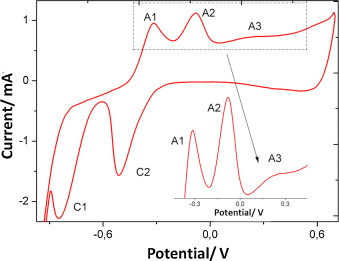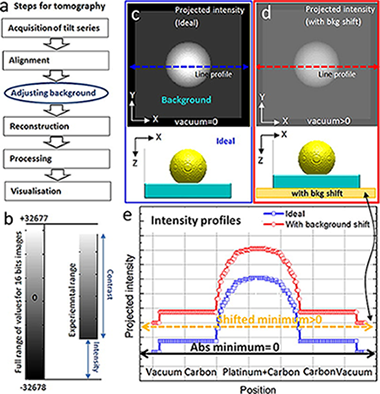Artículos SCI
2015
2015
Study of coatings by thermal analysis in a monument built with calcarenite
Luisa Franquelo, Maria; Dolores Robador, Maria; Luis Perez-Rodriguez, JoseJournal of Thermal Analysis and Calorimetry, 121 (2015) 195-201
Show abstract ▽

In this research, characterization of materials either added during restoration or formed by environmental contamination in the Seville City Hall, built with calcarenite stone, was investigated by thermal methods. Three different mortars for restoration have been characterized: (a) lime micro-mortar for internal consolidation of mortar itself, (b) mortar for reconstruction of deteriorated areas and (c) mortar with Portland cement. Acrylate polymer as consolidant and protection used was characterized. Addition of gypsum or “white cement” has been also applied in the restoration. Altered materials as black crusts constituted by gypsum, calcite and organic compound were determined by thermal analysis. Patina with high concentration of hydrated calcium oxalate, and the transformation mechanism of calcium oxalate into calcium carbonate and formation of calcium oxide produced by decomposition of the calcite were also characterized in the studied monument by thermal analysis. The patina with hydrated calcium oxalate produced by high biological activity was also studied.
Julio, 2015 | DOI: 10.1007/s10973-015-4432-4
Nanotecnología en Superficies y Plasma
A novel and improved surfactant-modified Prussian Blue electrode for amperometric detection of free chlorine in water
Salazar, Pedro; Martin, Miriam; Garcia-Garcia, Francisco J.; Luis Gonzalez-Mora, Jose; Gonzalez-Elipe, Agustin R.Sensors and Actuators B: Chemical, 213 (2015) 116-123
Show abstract ▽

A surfactant-modified Prussian Blue (PB) electrochemical sensor has been developed. Benzethonium was used to assist the electrodeposition of PB onto a glassy carbon electrode (GCE). The surface coverage ( [View the MathML source] ) was 7.75 × 10−8 mol cm−2, five times higher than the value obtained in the absence of surfactant, and the film thickness of ca. 123 nm. SEM, EDX, Raman were used to characterize the electrodes while their electrochemical analysis proved a superior performance for the surfactant modified PB film. Cyclic voltammetry and amperometry were used to study the sensor ability to detect chlorine, and the main experimental variables were optimized. Under optimized conditions, the sensor presented a sensitivity of 12 μA ppm−1 cm−2, a linear range from 9 ppb to 10 ppm and a reproducibility of 4.2%. For the first time, we proved the sensor performance for real applications. Thus, chlorine was determined in tap water and the obtained concentrations validated with a standard colorimetric method. The obtained results showed that our sensor is highly performant and reliable for applications involving determinations of environmental residual chlorine.
Julio, 2015 | DOI: 10.1016/j.snb.2015.02.092
Nanotecnología en Superficies y Plasma
New Copper wide range nanosensor electrode prepared by physical vapor deposition at oblique angles for the non-enzimatic determination of glucose
Salazar, P; Rico, V; Rodriguez-Amaro, R; Espinos, JP; Gonzalez-Elipe, ARElectrochimica Acta, 169 (2015) 195-201
Show abstract ▽

In this work a novel Cu nanostructured electrode is presented. Cu tilted nanocolumnar and porous thin films have been prepared by physical vapor deposition (PVD) in an oblique angle configuration and characterized by different techniques. Cyclic voltammetry and amperometry were used to study the sensing ability of the copper films deposited on ITO to quantitatively determine glucose and to optimize the experimental conditions of detection. Scanning electron microscopy data revealed that the film microstructure consists of tilted nanocolumns of around 70 nm of diameter and an inclination of 65° with respect to the surface normal that extend through the total thickness of the layer of ca. 300 nm. X ray photoelectron spectroscopy and Raman, used to determine the oxidation state of Cu, revealed that an oxy/hydroxide external layer formed around the nanocolumns is the active phase responsible for the electrocatalytic detection of glucose. Under optimized conditions, the CuO/Cu nanoporous/ITO electrode presented a sensitivity of 1.41 A mol dm−3 cm−2 (R2:0.999) with a limit of detection of 0.36 μmol dm−3 and a reproducibility of 3.42%.The selectivity of the proposed sensor was checked against various interferences, including physiological compounds, different sugars and ethanol, thereby showing excellent anti-interference properties. The CuO/Cu nanoporous/ITO electrode was also used successfully to determine glucose in blood samples showing a performance comparable to that of a commercial glucometer. An extended working range covering from 1 to 5 × 10−3 mol dm−3 was determined for these sensor films which, in this way, could be applied for different analytical purposes including agro industrial liquids.
Julio, 2015 | DOI: 10.1016/j.electacta.2015.04.092
Materiales Nanoestructurados y Microestructura
Fabrication of Optical Multi layer Devices from Porous Silicon Coatings with Closed Porosity by Magnetron Sputtering
Caballero-Hernandez, Jaime; Godinho, Vanda; Lacroix, Bertrand; Jimenez de Haro, Maria C.; Jamon, Damien; Fernandez, AsuncionACS Applied Materials & Interfaces, 7 (2015) 13880-13897
Show abstract ▽

The fabrication of single-material photonic-multilayer devices is explored using a new methodology to produce porous silicon layers by magnetron sputtering. Our bottom-up methodology produces highly stable amorphous porous silicon films with a controlled refractive index using magnetron sputtering and incorporating a large amount of deposition gas inside the closed pores. The influence of the substrate bias on the formation of the closed porosity was explored here for the first time when He was used as the deposition gas. We successfully simulated, designed, and characterized Bragg reflectors and an optical microcavity that integrates these porous layers. The sharp interfaces between the dense and porous layers combined with the adequate control of the refractive index and thickness allowed for excellent agreement between the simulation and the experiments. The versatility of the magnetron sputtering technique allowed for the preparation of these structures for a wide range of substrates such as polymers while also taking advantage of the oblique angle deposition to prepare Bragg reflectors with a controlled lateral gradient in the stop band wavelengths.
Julio, 2015 | DOI: 10.1021/acsami.5b02356
Materiales Nanoestructurados y Microestructura
Removing the effects of the "dark matter" in tomography
Gontard, Lionel C.Ultramicroscopy, 154 (2015) 64-72
Show abstract ▽

Electron tomography (ET) using different imaging modes has been progressively consolidating its position as a key tool in materials science. The fidelity of a tomographic reconstruction, or tomogram, is affected by several experimental factors. Most often, an unrealistic cloud of intensity that does not correspond to a real material phase of the specimen ("dark matter") blurs the tomograms and enhances artefacts arising from the missing wedge (MW). Here we show that by simple preprocessing of the background level of any tomographic tilt series, it is possible to minimise the negative effects of that "dark matter". Iterative reconstruction algorithms converge better, leading to tomograms with fewer streaking artefacts from the MW, more contrast, and increased accuracy. The conclusions are valid irrespective of the imaging mode used, and the methodology improves the segmentation and visualisation of tomograms of both crystalline and amorphous materials. We show examples of HAADF STEM and BF TEM tomography.
Julio, 2015 | DOI: 10.1016/j.ultramic.2015.03.017
- ‹ anterior
- 246 of 420
- siguiente ›














